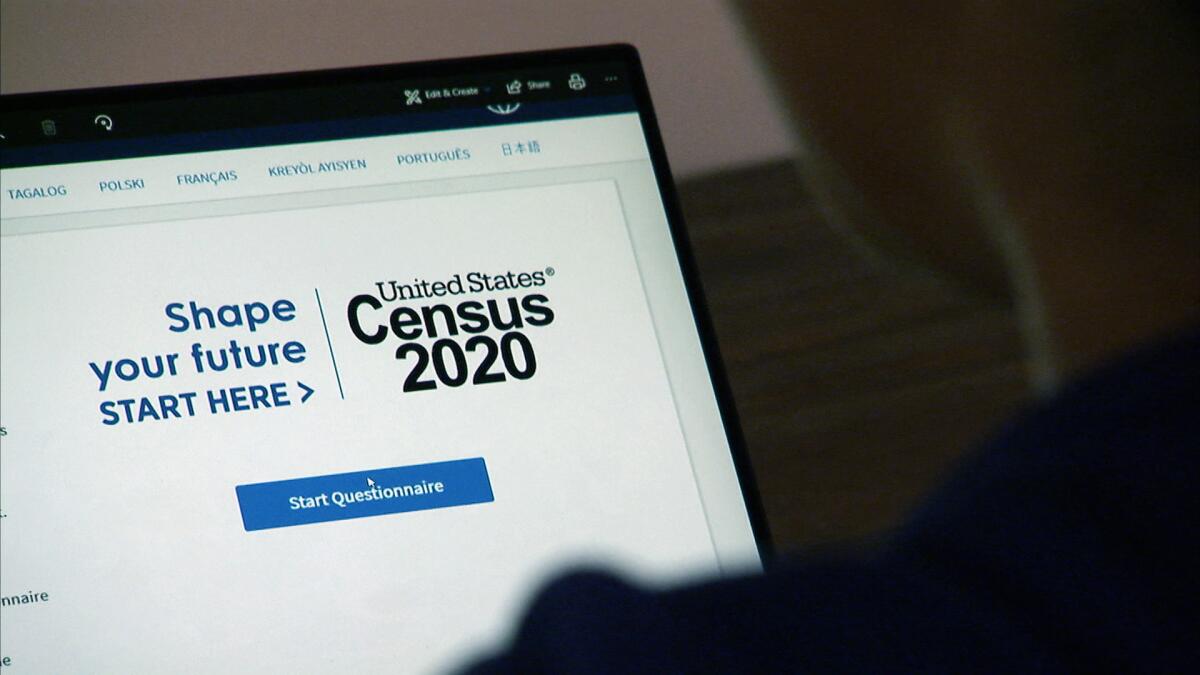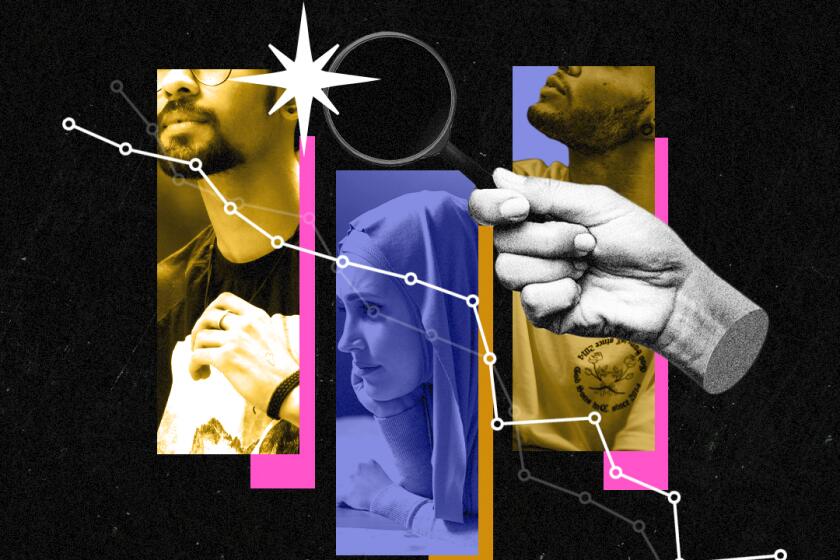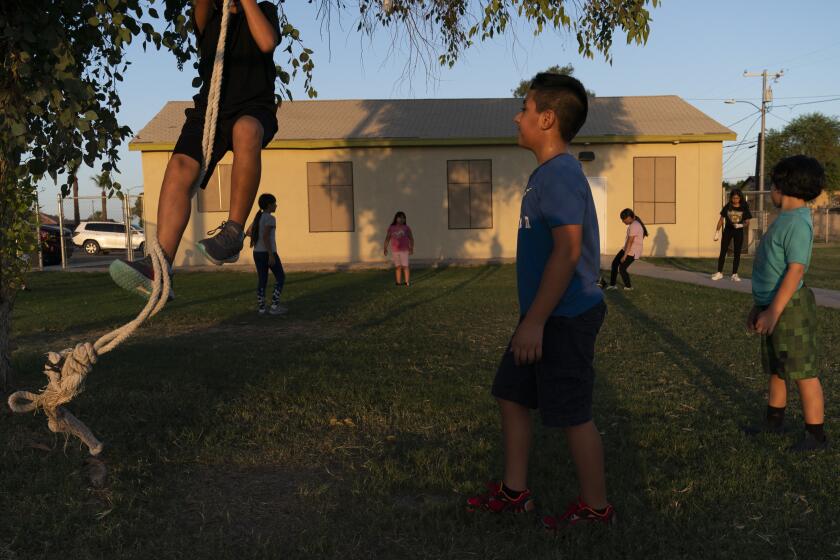Opinion: Latinos are getting out of the ‘other’ box on the U.S. census

- Share via
Last Thursday the White House announced a long-awaited decision from the Office of Management and Budget. The new directive will allow for the use of a single “check all that apply” race/ethnicity question with options for Latino/Hispanic and Middle Eastern/North African. This is a monumental step forward in advancing data equity, not just for these groups, but for our ability to accurately compare U.S. racial groups more broadly.
For decades, the U.S. census has maintained separate questions for Latino origin and race, forcing Latinos to choose from options such as white, Black, American Indian, Asian and “other” under the race rubric. Unable to fit themselves into these categories, in 2020, nearly 44% of Latinos either did not answer the race question or marked “other.” In fact, 94% of “other” race responses to the census were Latinos. And “other” became the second-largest racial group in the country in 2020.
But according to federal guidelines, “other” is not a race. And when the Census Bureau then creates population estimates, they have to reallocate absent or “other” responses into existing racial categories. This translates into nearly half of Latinos having a race assigned for them, and in that process most have been reclassified as white.
The U.S. Census Bureau will have new categories for race and ethnicity for the first time in 27 years, directly affecting people who identify as Hispanic, Latino, Middle Eastern and North African.
As one can imagine, having half the racial data for your community literally made up has led to incredibly poor quality racial data for Latinos. But it also means our country’s “white” category has included people who do not identify as white in it, which affects our ability to look critically at racial disparities. Differences among racial groups have been muted somewhat by the inclusion of Latinos in the white category who don’t see themselves as white and are likely not seen as white by others.
To be clear, there are Latinos who identify racially as white, Black, Asian or Indigenous. But there are many — approximately 70%, based on the Census Bureau’s testing of the new question design — who do not see themselves in these categories and prefer “Latino” alone to describe their race.
The desire for a “Latino” option is rooted in current and historical realities. There is a long-standing history of racialization of Latinos in this country. In Texas, for example, Mexican Americans faced Jim Crow-style segregation; they were excluded from schools, public swimming pools, restaurants, movie theaters and even cemeteries.
New data from the U.S. Census Bureau’s 2022 American Community Survey show Los Angeles County’s shifting demographics.
Perhaps one of the most publicly shared stories of this racial Latino discrimination is the story of Felix Longoria, whose body was returned to his home state of Texas in 1949 after he died fighting for his country in World War II, only to be denied burial in his hometown because the funeral home and cemetery were for “whites only.”
In my book on Mexican Americans in Texas, nearly all of the Mexican American respondents I interviewed who lived through the civil rights era recalled facing extreme forms of discrimination such as attending separate schools and seeing signs on restaurants that said things such as “No Dogs, Negros or Mexicans.”
Discrimination against Latinos continues today, and both older and younger Mexican Americans in my study spoke of racist encounters in the workplace, with police, in schools. In fact, despite legislation to end school segregation, today many school districts remain essentially segregated for Latinos, who drop out of school at a higher rate than other groups. A Harvard University study published in 2019 found that across multiple levels — employment, housing and healthcare — Latinos reported discriminatory experiences. When “Latino” is not recognized as a racial category, it is both an affront to history and a denial of these continued experiences with racism.
However, the 2020 census missed an unexpectedly small percentage of the total U.S. population given the unprecedented challenges it faced.
Because it will be possible that many Latinos will check only the “Latino/Hispanic” box for the race/ethnicity question on the census, concerns have been raised that more specific data about this community will be lost. In fact, research conducted by the Census Bureau shows that including a Latino category in a “check all that apply” format yields more accurate data, not less. Those who identify solely as Latino may check that box; those who identify as Latino and also as white or Black or Asian or Indigenous can make that clear as well.
For example, Census Bureau research revealed that when white Latinos could identify themselves as Latino and white in the new format, those who did were actually white, as opposed to many who do not identify as white but have been assigned to that race. The numbers of Black Latinos remained the same. This means that the new format will better reflect actual racial differences.
This decision to change how the government asks about race and ethnicity is the first change to federal race measurement standards in 27 years. It is long overdue and will much better reflect the experiences of Latinos and Middle Eastern/North African populations who have fought for years to get equitable data for their communities.
Julie A. Dowling is an associate professor of sociology and Latin American and Latino studies at the University of Illinois, Chicago. She is the author of “Mexican Americans and the Question of Race,” and she served on the U.S. Census Bureau’s advisory committee on race and ethnicity from 2014 to 2020.
More to Read
A cure for the common opinion
Get thought-provoking perspectives with our weekly newsletter.
You may occasionally receive promotional content from the Los Angeles Times.













